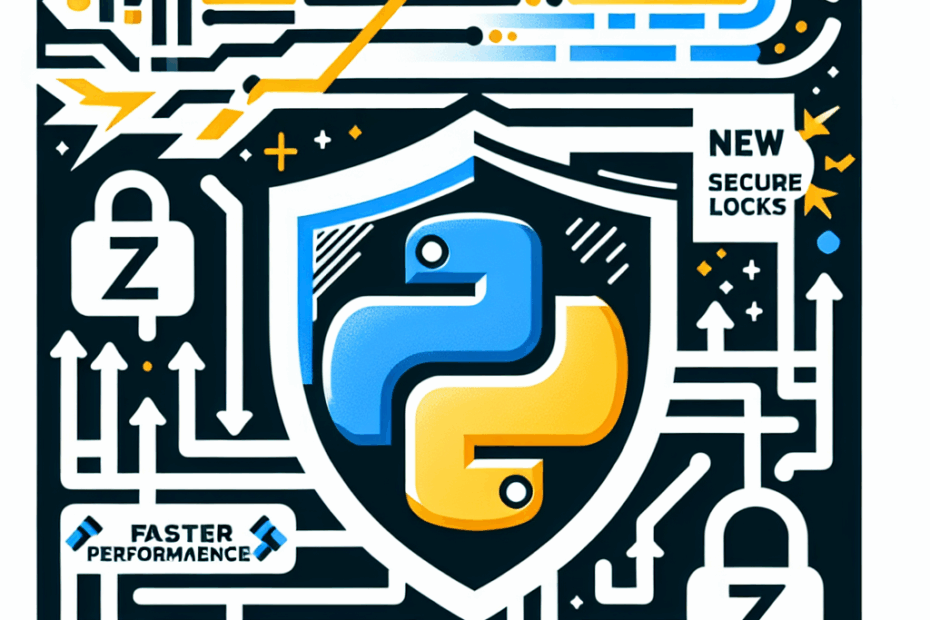“`html
Python Still Reigns Supreme! And a New Friend Called Zig?
Hey everyone, John here! Today, let’s talk about Python, which is still super popular in the programming world. It’s like the most popular kid in school, everyone wants to be its friend. And there’s some exciting news about making it even faster, plus a cool way to use another language called Zig to give Python a speed boost!
Python’s Popularity is Skyrocketing!
Python’s popularity is higher than ever! Apparently, it’s been this popular since Java in 2001. That’s a long time! It’s like being the number one song on the radio for over two decades. And guess what? Python is getting even more popular!
Lila asks: John, what does it mean that Python is a “programming language”?
That’s a great question, Lila! Think of a programming language as a way to give instructions to a computer. It’s like writing a recipe for a computer to follow, so it knows what to do. Python is just one type of language we can use to write these recipes.
Making Python Zoom: The Quest for Speed
One of the big goals is to make Python faster. It’s already great, but imagine making it even better! It’s like upgrading your bicycle to a motorcycle! Making Python faster isn’t easy because of how it was originally designed. But programmers are working hard on it, and they’re already seeing some improvements. Think of it like slowly tuning up a car engine to make it go faster. Every little tweak helps!
Locking Down Dependencies: Python’s New Lock File
There’s also news about a new “lock file” format for Python.
Lila asks: A “lock file”? What does that even mean?
Okay, imagine you’re building a Lego castle. You need specific Lego bricks to make it work, right? A “lock file” in Python is like a list that tells the computer exactly which “bricks” (or dependencies) are needed for a program to run correctly. It makes sure everyone uses the same versions of these “bricks,” so everything works smoothly. Before, these lists were created using different tools, but now Python has its own official way to do it!
Zig to the Rescue: Boosting Python’s Performance
Now, this is where things get really interesting. There’s a language called Zig, and it’s known for being super fast. Because Zig is similar to another language called C, you can combine Zig with Python. This lets you get the best of both worlds: Python’s easy-to-use nature and Zig’s speed. It’s like adding a rocket booster to your skateboard!
Lila asks: What does it mean when it says Zig is similar to the “C” language?
Good question! The C language is a bit older and is known for being very close to the computer’s hardware. This makes it very fast, but also a bit harder to use. Zig is designed to be like C but easier to use. So, when we say Zig is “C-like,” we mean it shares some of the same features and can be used in similar ways, especially for tasks where speed is important.
Other Cool Updates: PyCharm and Type Checkers
Here are some other quick updates:
- PyCharm Changes: The makers of PyCharm are combining their Community and Professional versions into one. The free features are still free!
- New Type Checkers: There are new tools called “type checkers” being developed by different companies. These tools help find errors in your Python code before you run it. Think of it like having a grammar checker for your code! Two examples are “ty” from Astral and “Pyrefly” from Meta.
Lila asks: Type checkers? What are types, and why do we need to check them?
Okay, imagine you’re sorting toys into boxes. One box is for cars, one is for dolls, and one is for stuffed animals. These are different “types” of toys. In Python (and other programming languages), variables also have types, like numbers, text (called “strings”), or lists. A type checker makes sure you’re not accidentally trying to put a car in the doll box, so to speak. It helps prevent errors by making sure you’re using the right types of data in the right places.
Back to Basics: Plain Vanilla Web Development
There’s also a note about going back to basics with web development. This means building websites using just plain HTML, CSS, and JavaScript, without using any fancy frameworks. It’s like building a house from scratch with just wood and nails, instead of using pre-made walls and roofs.
My Thoughts, and Lila’s Too!
It’s great to see Python continuing to evolve and improve. The addition of the lock file and the potential speed boosts from Zig are really exciting. Python’s adaptability is really what keeps it ahead of the game.
Lila says, “Wow, that sounds complicated, but I think I understand a little bit more now! I’m still learning, but it’s cool to see how many people are working on making Python even better!”
This article is based on the following original source, summarized from the author’s perspective:
Programmers dig Python and Zig
“`
